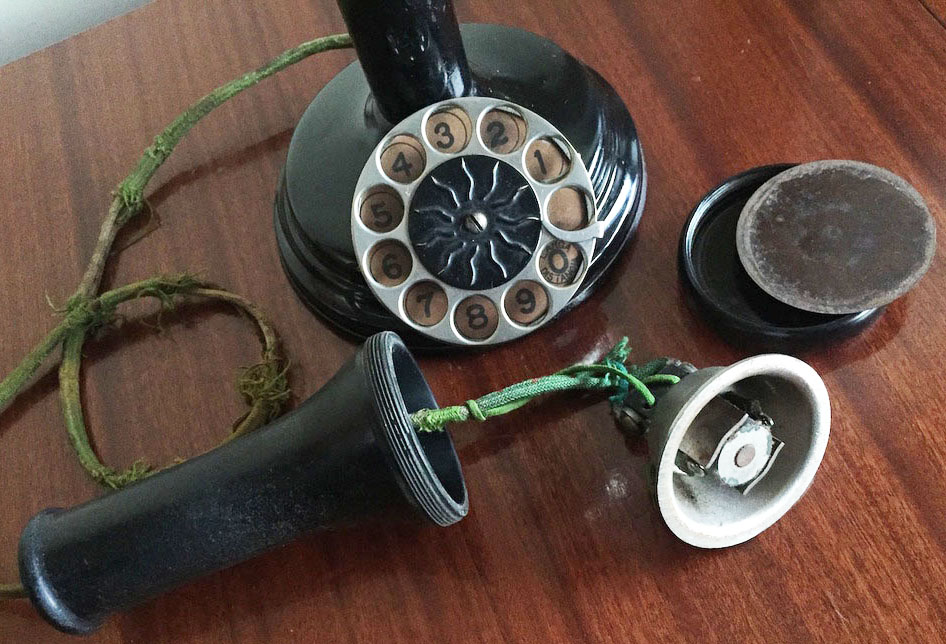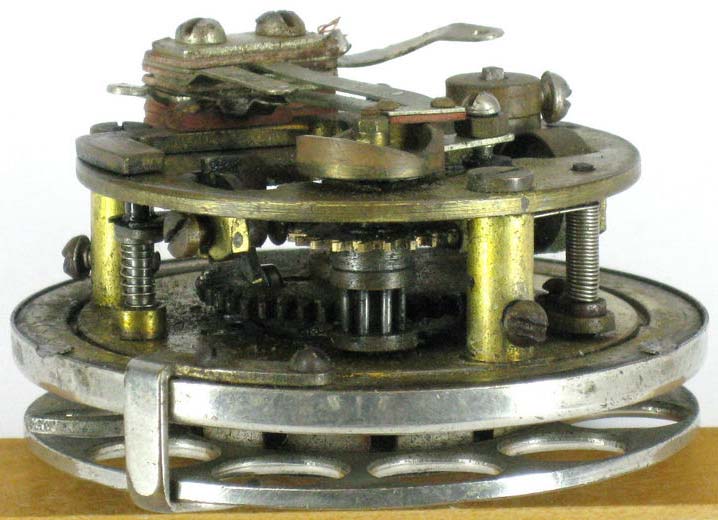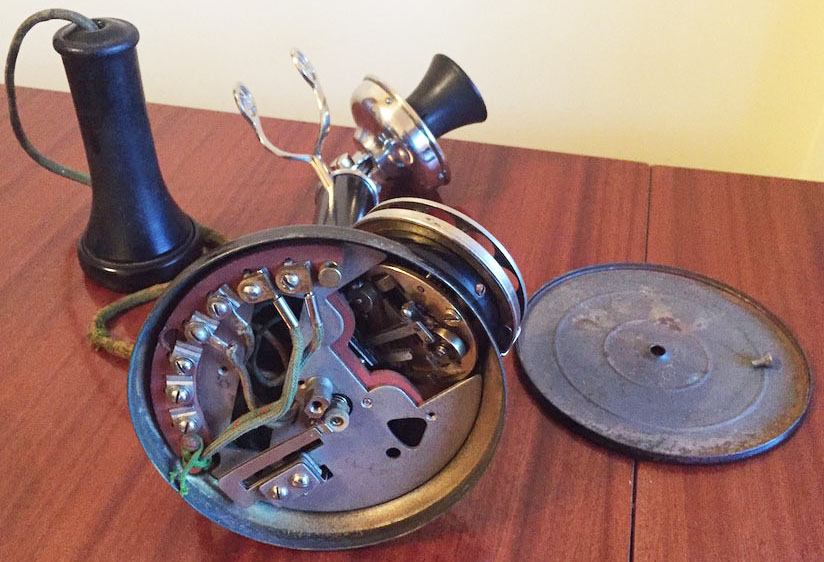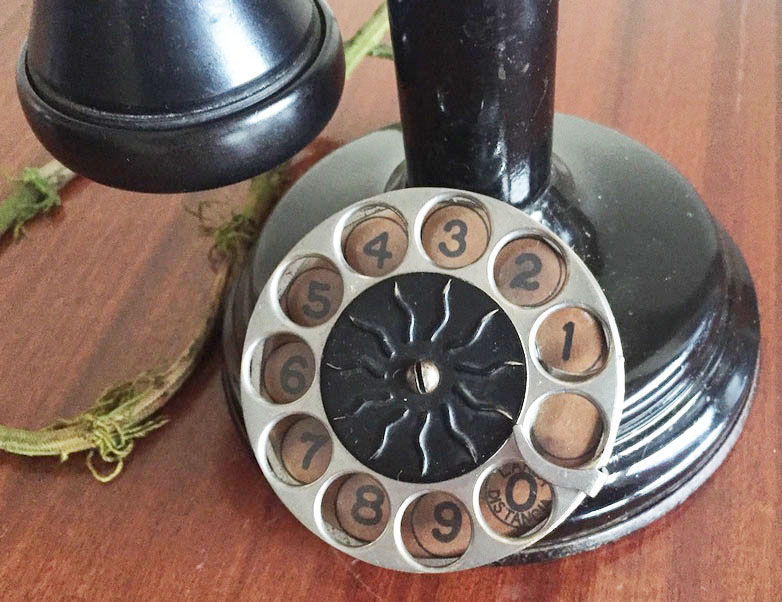AE Step Base Candlestick with Sunburst Dial
This Automatic Electric candlestick sold for $AU 2600.00 after 18 bids in May, 2016.
The Sunburst Dial (so called because of the design in the centre of the finger wheel), was released in 1909 and superseded the large 11 digit dials that were used before it. It was initially used on wall telephones (black wooden residence sets or Geelong phones) and on some CB candlesticks. The dial was mounted half way up the stem of the candlestick as that was the standard position for a dial at that time.
The step base candlestick was released in 1911 – initially in nickel plated brass and later in black painted steel. Early examples have an ‘A’ in the switch hook.
The Mercedes dial was also released in 1911 so the combination of a step base candlestick and a Sunburst dial was very short lived.

As is typical for these telephones, the receiver is electromagnetic and does not contain a permanent magnet. It uses line current to create an electromagnet is its place – these receivers do have DC flowing through them.


This is the earliest version of the Sunburst dial. The pulse interrupter (upper middle of the image) is a cup with undulating sides that operate the pulse contacts. The moving pulse contact can be seen riding on the edge of the cup via a fibrous bushing.
On the lower left between the finger wheel and the number plate is the trigger that operates the dial mechanism. This is mentioned later on.

When the dial is mounted, contacts in the base of the telephone connect with terminals on the dial - no wire connections are needed.

The finger wheel has 11 holes and does not return when released. This design was developed to prevent subscribers from "hurrying" the dial. There is a trigger that activates at the finger stop releasing the mechanism that starts pulsing. The trigger is visible in some of the pictures at the bottom of the "1" finger hole.
Here is a video that shows the dial in operation:
Images are from an eBay auction run by axoworld
Video is from Telefonos Antiguos